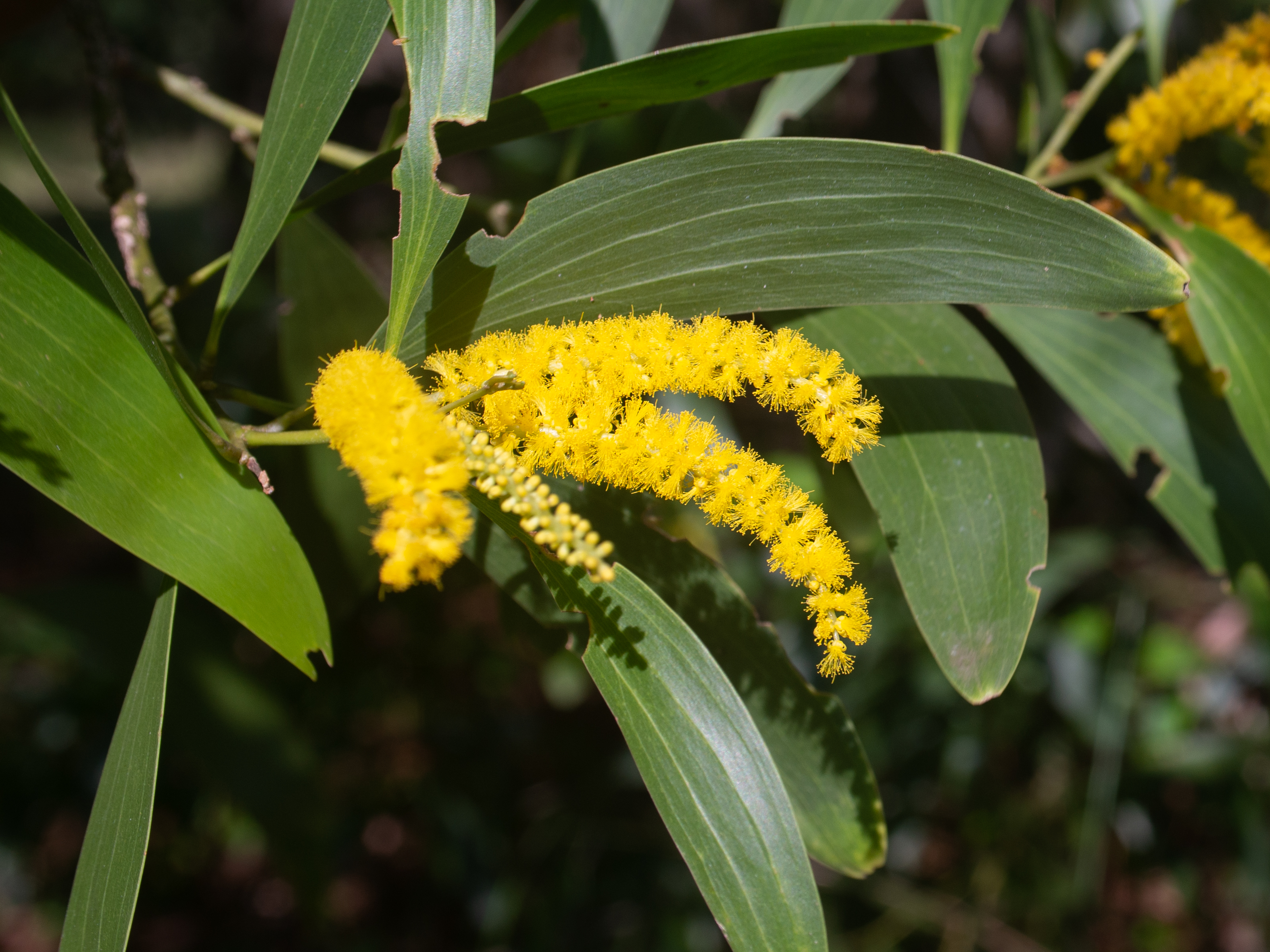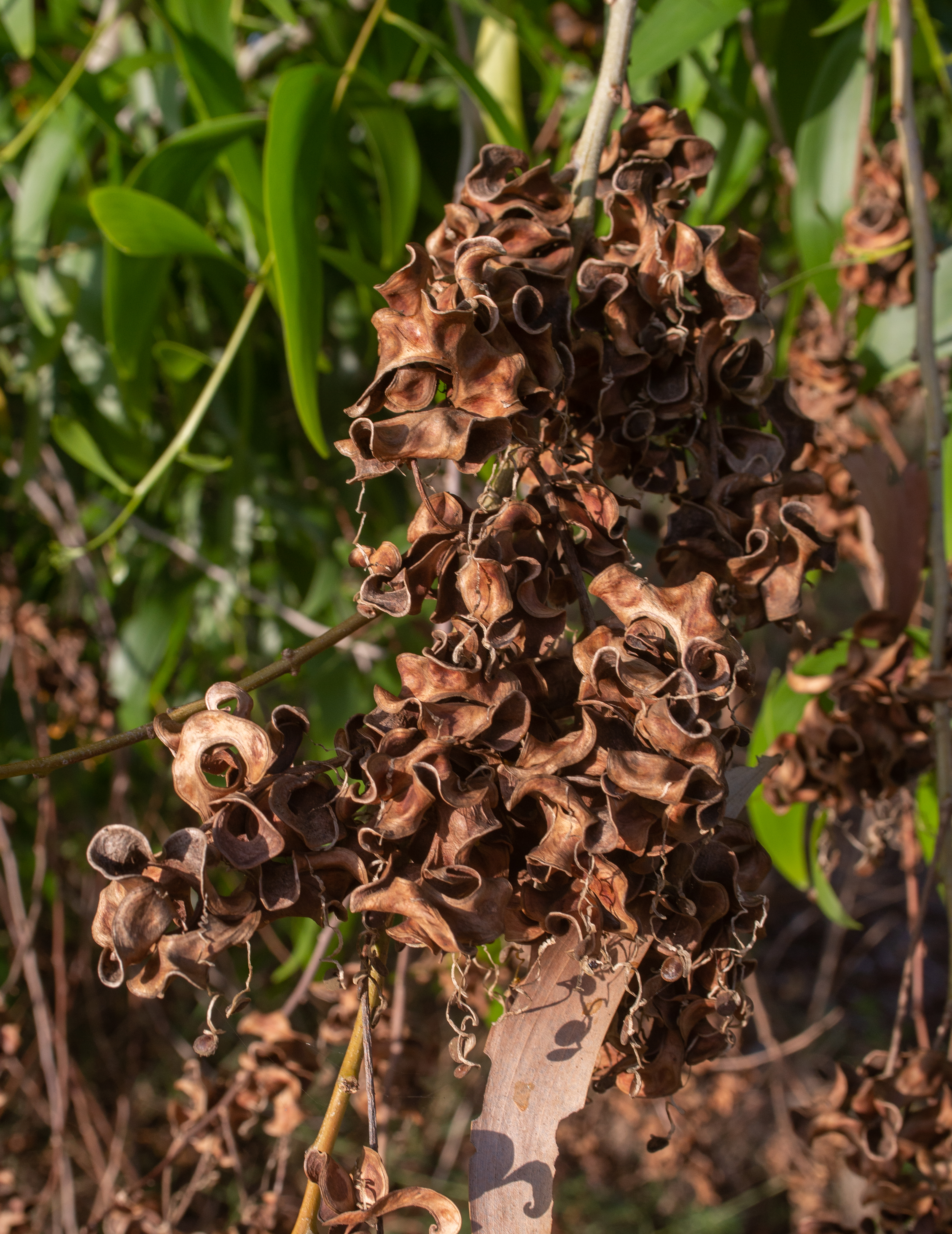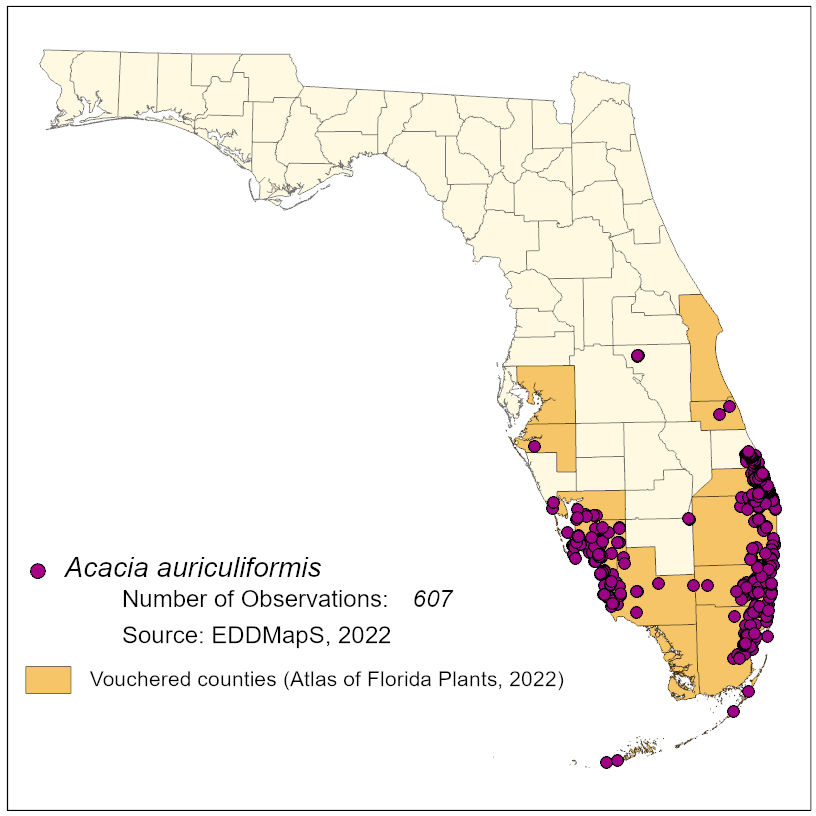Common Name: earleaf acacia
Family: Fabaceae
Common Synonyms: none
USDA Hardiness Zone: 10A - 11
Growth Habit: Tree
Origin: Australia, Papua New Guinea, and Indonesia
FISC Category: 1
FDACS Listed Noxious Weed: No
Introduction Date: 1932
IFAS Assessment:


Evergreen tree to 15 m tall, often multi-stemmed. Alternate, simple, leaves, slightly curved, 11-20 cm long with 3-7 parallel veins, surfaces dark green. Flowers mimosa-like, yellow-orange in spikes at leaf axils. Flowers spring through fall. Fruit a flat oblong twisted pod with black seeds attached by orange arils.
Able to colonize a wide variety of habitats - flatwoods, scrub, tidal marshes, coastal uplands, pine rocklands, swamps, disturbed sites
Vouchered in most south zone counties, possible EDRR candidate in central zone if not well established. Adapted to wet or dry conditions. Seeds dispersed by birds.

NA
Gilman, E.F. and D.G. Watson. 2013. Acacia auriculiformis: Earleaf Acacia. IFAS Publication ENH-163. University of Florida, Gainesville, Florida.
IFAS, Center for Aquatic and Invasive Plants. 2013. Earleaf acacia. http://plants.ifas.ufl.edu/node/16. Accessed on December 2, 2013.
Langeland, K.A., H.M. Cherry, C.M. McCormick, K.C. Burks. 2008. Identification and Biology of Non-Native Plants in Florida's Natural Areas-Second Edition. IFAS Publication SP 257. University of Florida, Gainesville.
Langeland, K.A., J.A. Ferrell, B. Sellers, G.E. MacDonald, and R.K. Stocker. 2011. Integrated management of non-native plants in natural areas of Florida. EDIS publication SP 242. University of Florida, Gainesville, Florida.